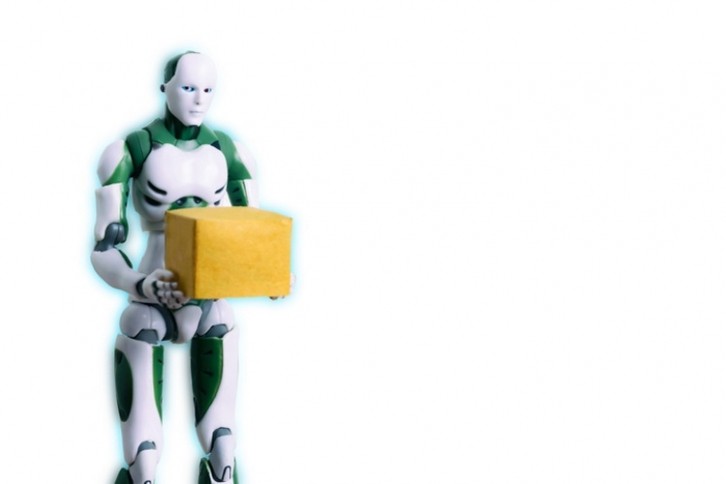How bakery and snack brands are leading the way in sustainable packaging

It’s no secret that fast-moving consumer goods (FMCG) haven’t tended to be environmentally friendly or sustainable. According to WRAP, nearly 70% of the UK’s plastic waste comes from plastic packaging – a shocking statistic that a handful of bakery and snack brands are seeking to address.
From adopting edible and zero-waste packaging to smart solutions that extend the shelf life of products, these companies are leading the charge to a more sustainable future.
The need for change
The global picture is no less sobering. Plastic Oceans International reports that 10 million tons of plastic is dumped into oceans annually, with 50% of plastic produced being single-use only.
Bakery and snack brands have an opportunity to stand out from the pack by adopting more flexible packaging solutions. With the FMCG sector worth more than £134bn ($174bn) annually in the UK alone, the positive impact could be huge.
Aquapack’s May 2024 study into the problem and potential solutions found there is an appetite for change, with 92% of the UK packaging experts surveyed saying their businesses plan to stop using plastic in their consumer packaging altogether.
Paper is already overtaking plastic for many: 62% currently use paper for their consumer packaging, 53% use plastic and 48% use more environmentally friendly polymers.
But Dr John Williams, chief technical officer for Aquapak, argues paper alone often lacks functionality. The key lies in innovative new solutions, particularly when it comes to end of life and recyclability.
“The problem is that snack packaging is quite complex,” Dr Williams told this site.
“The development of lightweight multi-layer structures over the past 30 years has driven efficiency and shelf life but the complex structures are impossible to deal with at end of life.
“This has led to the drive towards packaging which can be recycled or composted. The problem is that materials that offer both functionality and a real end-of-life option are very rare.”
Leading the pack
The picture appears to be changing, though, with a handful of bakery and snack brands adopting sustainable packaging courtesy of the latest tech.
Targeting the hot-to-go market, Coveris’ new ‘heat in pack, eat in pack’ offers a multi-functional solution.
The packaging company’s fibre and fibre-composite range utilizes a heat and grease resistant board with a specialist barrier coating designed to preserve quality, freshness and heat. It’s also oven safe to 220°C (428°F), so products can be cooked in the pack.
Snack packs have already been launched for Rollover Chicken Nuggets and Jalapeño Cheese Poppers, though the potential in this growing market is huge, from pastries and pizza to all kinds of sweet and savory snacks.
“HEAT is a gamechanger for the food-to-go sector,” said Paul Robertson, Food-on-the-move sales director for Coveris.
“Providing the packaging of the future, our hot-to-go pack allows for a whole new category of products to be made available to consumers in a sustainable, convenient and added-value way.”
Greiner Packaging addresses another pain point – sustainable and functional packaging is all but useless if consumers can’t easily recycle it.
Its K3 r100 packing format tackles that issue and has been adopted by Symington’s for its Oatburst Instant Porridge range.
“Greiner recognised that, despite the intuitive tear tab featured on the existing K3 pack, not all consumers engage in separating the cardboard outer from the lightweight plastic cup, so K3 r100 delivers a failsafe solution,” Julie Eller, Greiner Packaging’s UK & Ireland sales and marketing director, told this site.
“The cardboard wrap opens up all by itself during the waste disposal process – without the need for human intervention – and the materials can then be disposed of separately and recycled.”
The packs, which are engineered to stay in place without glue, were primarily designed with yogurts and readymeals in mind, but are also proving popular for bakery items, such as cake bites, along with beverages and freshly prepared foods.
A collaborative approach
How can other companies follow this example?
Interestingly, 84% of those surveyed by Aquapack would welcome tougher regulation on microplastics. A third were ‘extremely concerned’ about the impact of plastic packaging, while the remaining respondents said they were ‘quite concerned’.
So what’s next? Aquapack’s Dr Williams says there’s no silver bullet. What’s required is collaboration between brands and a multi-innovation approach. The answer lies in a range of materials and technologies, including biodegradable plastics, plant-based materials, edible packaging and zero-waste packaging.
“No one material can answer all of the problems across the sector,” he told us.
“There are examples of materials answering the problem in one very narrow sector and, while this is a good demonstration of positive change, it doesn’t solve the issue. The key is to combine these emerging smarter materials to develop a full answer across the sector.”
In the future, he believes, “There will be an increasing availability of innovative and bio-based materials, and there has to be a collaboration and combination in material uses to develop truly sustainable packaging.”





















